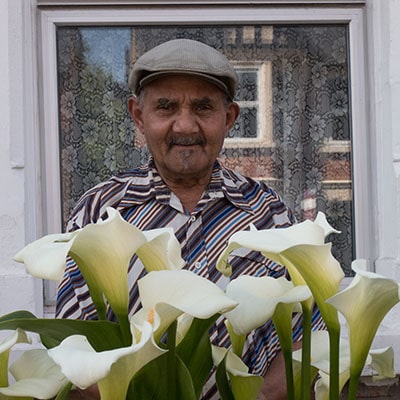Planning’s radical and socialist roots
The COVID19 lockdown has some upsides, including quiet streets, bird song, clean air and a chance to think. It has also allowed me time to read a number of books that have been weighing on my conscience, the important but not so urgent category. One of these has been Duncan Bowie’s on the radical and socialist tradition in British planning (1). I can report that it is a bit of a treat for anyone who thinks they know their planning history, because while the outline is familiar, the perspective certainly isn’t. It provides a chronological narrative of radical and socialist planning and housing pioneers from the 1790s to the outbreak of the First World War, a pre-history of land, planning, and housing reform in the UK. Beginning with the early colonial settlements in the Puritan and Enlightenment eras such as Savannah and Philadelphia, it also covers Benthamite utilitarian planning, Owenite and utopian communitarianism, the Chartists, The First International, Christian Socialists and positivists, radical and working class land reform campaigns in the late 19 Century, rounding off with the Garden City pioneers and the institutionalisation of the planning profession with the 1909 Housing and Town Planning Act and the creation of the Town Planning Institute in 1913.
There are plenty of gems to be found in it and quite a few sacred cows slaughtered. For example the role of Robert Owen. Depending on the perspective of the writer, Owen has been viewed as the founder of British socialism, the founder of British trade unionism, or the father of the British co-operative movement. Bowie argues, convincingly, that Owen who is largely remembered for his experiment at New Lanark in Scotland, was too autocratic and especially in later life, millenarian, to successfully establish new settlements that would last. When as with Harmony Hall in Hampshire or New Harmony in Indiana, they collapsed after a few years, Owen always blamed the participants for failing to follow his principles closely enough. But his influence on others was profound. Owenite ET Craig who lived to the age of 90 and was an active member of William Morris’s Socialist League in the 1880s, established a communitarian settlement at Ralahine in County Clare, Ireland in 1831. It only fell apart when the absentee landlord lost all his money on the gaming tables of Dublin and the community was evicted. Bowie acknowledges the contribution that these socialist communitarianism experiments had on both thinking and practice at the time, but is very doubtful about their real significance for planning as we have come to know it. They were essentially escapist, a retreat where a select group could live in a community isolated from the evils of the modern world and, ‘What all these initiatives have in common is a failure to challenge in any practical sense the contemporary domestic political and economic structures. The focus of the communitarians was on transcendence rather than reform – there was no attempt to take power within the existing society and state, only to escape from it.’ In Bowie’s view, this explains why Owen could win support from the aristocratic and political elite. He was offering an option that was preferable to conceding social or political reform to the Chartists or other radical working class movements. So much for Owen’s socialist or trade union credentials.
The 1870s and 80s were crucial in the emergence of town planning as an idea whose time had come. Bowie brings together the work of middle class reformers such as Octavia Hill, Labour Emancipation League activists such as Ambrose Barker and Frank Kitz (both anarchists) and the new socialist currents channelled into the Fabian Society of the Webb’s and the Social Democratic Federation (SDF) of Henry Hyndman and William Morris. Their campaigns were around land reform (Henry George’s ‘single taxers’), land nationalisation, housing conditions, sanitary reform, public health, and the need for new settlements and suburbs as a result of slum clearances, and came at the same time as the rise of powerful municipal authorities such as Birmingham, Manchester and Leeds. It must have been a heady time for young radicals such as Patrick Geddes, Ebenezer Howard and Raymond Unwin. It is fascinating to see how the vision of individuals, the breadth of campaigns, and the political heft of the municipalities eventually came together, and to tease out the strands that linked them; from Unwin’s early activism in the Socialist League (Morris’s breakaway from the SDF), the impact of the Arts and Crafts Movement on an influential group of architects like Ashbee, Lethaby and Mackmurdo, to the thinking that French anarchist geographers such as Elisee Reclus, a key figure in the 1871 Paris Commune, had on Geddes. Despite his influence on planners from Abercrombie to Mumford with his mantra of ‘survey, analysis, plan’, Bowie is scathing about Geddes too, arguing that in the end he was hostile to the whole concept and practice of governance, ‘Geddes missed the fundamental point that planning requires institutions and the power of government.’
Ebenezer Howard had far more impact in the real world and on planning. His book on Garden Cities was published in 1898, though Bowie makes the point that the ideas were hardly new as the 19 Century communitarian experiments pre-figured much of what he proposed; ‘a synthesiser not an originator’. The big difference was that with the help of the Garden City Association, both Letchworth, founded in 1903 and later Welwyn, were successful. But the decade before World War One was when planning came into its own. There were charismatic leaders, the working examples such as Bourneville, Letchworth and Hampstead Garden Suburb, the latter both designed by Unwin, and the political pressure exerted by the big municipalities to be given to tools to do what was so obviously needed in terms of city development. It led to the 1909 Housing and Town Planning Act and the eventual establishment of a town planning profession.
The irony of writing about all this now isn’t lost on Bowie. In his introduction to what is an authoritative and scholarly book, he laments that planning as a discipline has been marginalised in recent years, ’Many practitioners and commentators including this author, take the view that planning has lost its way. In the British context and more specifically within the planning regime in England, there is now little notion of a public purpose and the role of planners is seen by Government…as primarily to enable the private market to respond to the challenges of growth.’
What is really striking, as we collectively struggle with the most serious public health crisis in a century, is just how relevant the debates of the past still are for today; the importance of public health, the quality of housing and the need for municipal housing, the protections needed for renters, the problems with air quality, and even the length of journey times for workers into cities, were the primary concerns of the radicals and socialists whose voices speak to us from the pages of this book, a century and more ago. It also reminded me as I use this time to reflect, just how badly degraded the planning system has become over recent decades, and why in an age of climate breakdown and global pandemic, a new vision of planning is so necessary if we are to secure a decent quality of life for all.
1. Duncan Bowie. The radical and socialist tradition in British planning: from Puritan colonies to garden cities. Routledge 2018.
This article first appeared in the June/July 2020 issue of Town and Country Planning. A longer version of the article also appeared in The Journal of William Morris Studies vol 23 no4 2020.

